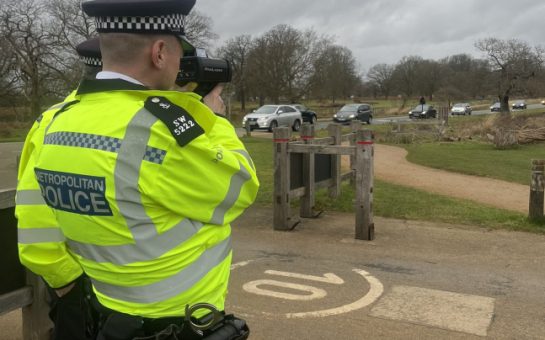Online dating related sexual offences have risen six-fold since 2009 as popularity for ‘hooking-up’ apps continues to grow.
New figures from the National Crime Agency (NCA) revealed there were 184 sexual offence allegations related to online dating in 2014, compared to 33 in 2009 – of these, 85% of the victims were women.
The National Crime Agency’s Serious Crime Analysis Section (SCAS) identified a significant increase in the number of reports to UK police forces about serious sexual assaults carried out by strangers initiated through online dating.
“The NCA’s report shows that sexual offenders are using dating websites and apps to target women and girls in particular,” said Sophie Walker, leader of the Women’s Equality Party.
“We need to see a step change in prevention, detection and prosecution of sex crimes.
“This means better abuse reporting systems, stronger background checks and industry cooperation to keep repeat offenders away from online dating communities.”
The online dating market in the UK has increased significantly in the past seven years, with more than 7million users of dating sites currently, and further growth expected.
Online dating initiated sexual offences have increased yearly since 2009, with 39 offences in 2010, 62 in 2011, 79 in 2012, 145 in 2013 and 184 in 2014.
The Online Dating Association (ODA) said they are seeing growth in accessing dating sites on portable devices, which appeals particularly to a younger audience.
NCA’s analysis showed 42% of the female victims were aged 20-29 and 24% were 40-49.
The male victims were younger with 25% aged between 15 and 19.
The WEP mayoral candidate said: “Dating app owners, who create significant revenues from bringing people together, must think creatively about how to use technology to ensure their customers’ safety.”
The NCA report says: “These offenders are less likely to have criminal convictions, but instead exploit the ease of access and arm-chair approach to dating websites.
“This is aided by potential victims not thinking of them as strangers, but someone they have got to know.”
The data shows in 41% of cases, the victim and offender started their date at a residence and 72% of offences were committed at the victim’s or offender’s home.
“Dating services account for about a third of all new relationships and the friendships, romances, marriages and families that these bring about,” said ODA chief executive, George Kidd.
“The NCA is right to look at what happens online and the ODA are already working with them in getting the right messages out to people.
“The ODA strongly encourage people to report any attack to the police and dating site.
“We want dating to be a safe as well as great experience and take our responsibilities seriously.
“ODA members check user profiles, create safe-chat environments, remove anyone causing trouble offence or harm and give users advice and guidance on how to stay safe when online and when meeting someone new.
“We are always looking at how we can do more.
“If using a dating site, you should look for the ODA member logo, to have confidence that the site is working to the standards we have set.
“But you should always take note of the safety advice available, especially when starting out on a new relationship.”
In 43% of cases where the information was available, the first face-to-face meeting between the victim and the offender took place within one week of their initial contact online.
Mr Kidd said: “We will look at how we can share our events and advice with apps and sites that are not in membership – that are more or all about sex encounters and hook-ups.
“The NCA work shows this is where much of the issue sites – with people meeting on the day or very soon after going onto a service and with one or both parties assuming the encounter will be sexual.
“That may be the start point, but consent is still critical and NCA work suggests that’s where things may be going wrong.”
Mr Kidd noted that the statistics may not be quite what they seem.
He said: “The boom in dating and encounter apps and sites could affect the stats.
“So could growth in mainstream dating. So could population demographics or changing social norms. So could a greater willingness to report.
“I cannot say but I mention this to make the point that statistics help us see trends but do not give a total picture.
“It is possible, for example, that the actual level of offences are down while the reported level is up.”
Image courtesy of Casey Muir Taylor, with thanks




